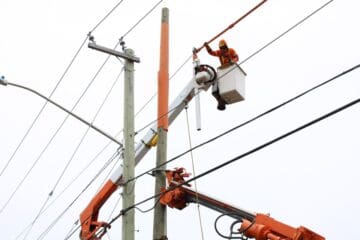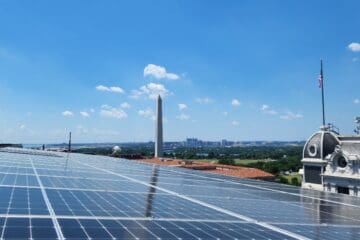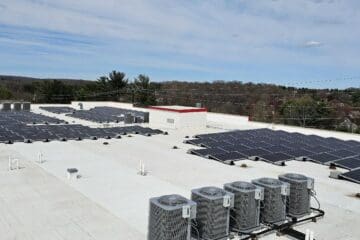Over the course of the past decade or so, sustainability goals have become an ever-growing central feature for large multi-national corporations (MNCs). More recently, they have become incorporated with ESG (Environmental, Social, Governance) programs embraced by a wide range of companies in order to improve transparency, as well as social and environmental good. Although these large MNCs have had ambitious goals on the books for a while now, many of them are recognizing the importance of a sustainable supply chain, and how far-reaching efforts within their supply networks can work in tandem to create a cleaner planet with the commonality of better business.
The Problem
With some MNCs having extensive far-reaching supply chains, getting a handle on sustainability compliance has made tracking challenging. Many larger multi-nationals lose sight of suppliers as the chain reaches further away from tier-one & two suppliers. But, sustainability initiatives give corporations the opportunity to become more familiar with their entire supply chain, where source materials come from, and create a chance for connectivity to the manufacturers that work hard to fulfill their space in the supply chain model. Certain scenarios have popped up in tracking and ensuring sustainable alternatives to ways of manufacturing goods in the past. One is agreement & congruence with siloed goals of the MNC. Say, for instance, a lower-tier supplier could be supplying a product to more than one major industry or more than one multi-national corporation- both of whom are in different industries. So which sustainability program do they adhere to even if they are aware of it? And if they’re in a country that does not enforce strong environmental measures, it makes sustainability of any corporation a smoke screen rather than a true program. Identification, connection, education and monitoring is the way MNCs can reach every entity in their supply chain. Beyond that, challenges with resources can also be an issue. Even when manufacturers in a corporation’s supply chain knows exactly what needs to be done, they often don’t have the resources to accomplish at least some of the goals the end-user MNC is looking for. The sooner the MNCs recognize and address this, the sooner the entire supply chain can start benefitting from more sustainable ways of doing business moving forward.
Let’s look at a few of these MNCs and how they are starting to transform sustainable supply chains through a holistic methods.
Photo credit: Carles Rabada @unsplash
Apple
Apple, a company that has put efforts into becoming a sustainable brand (despite its public snafus and business model caveats). With a carbon neutral goal of 2030, here are a few of the major steps they have taken:
- Their famous circular headquarters in Cupertino, California just south of San Francisco running entirely on renewables (and even has carbon sequestering trees planted in the center of the circular structure.
- In terms of materials use/reuse: Apple is currently working on Dave- their recycling robot able to cyphon out recyclable materials from used products. They are also working with ______ to invent a carbon-free aluminum smelting process. So not only does Apple try to work towards sustainable measures utilizing technology available, they are reaching further to invest in and invent technology we don’t even have yet in order to achieve their stated goals.
- To add one more initiative, here are some funds they are an active part of: China Clean Energy Fund; Carbon solutions fund; Conservation International – WWF Conservation Fund partnership, investing in restoring & protecting hundreds of thousands of acres of forests around the globe.
So how are they approaching the issue with trying to spread sustainability throughout their extensive supply chain? They launched the Apple Portal several years ago. The portal is designed to engage their supply chain in the sustainability initiatives. Among the commitments, an encouraging 70+ suppliers have made 100% clean energy commitments in various timeframes.
Unilever
Unilever, with a net zero energy goal by 2039, is focusing not only of their own brand internally, but also on accelerating clean energy sourcing throughout their supply chain. The company also focuses heavily on raising living standards through fair wages. It has a responsible sourcing policy, where their goal is to work in tandem with their suppliers in an effort to ensure that workers’ rights are upheld. One of the “Fundamental Principles” of this responsible sourcing policy addresses environmental impact and increased sustainability measures, including “A systematic review of the supplier’s sustainability practices and environmental management systems is undertaken regularly with support from experienced conservationists and with the involvement of local communities to determine whether appropriate policies and procedures are in place.” It focuses on major environmental and social issues like better living standards through fair wages, regenerative agriculture, and diversity and inclusion. As they flesh out more of their policies on ensuring supply chain compliance with the company goals, their chain network will hopefully implement meaningful strides towards these lofty goals.
Read Also:
Photo credit: Erik Binggeser @unsplash
Proctor & Gamble
P&G, with their four sustainability goal categories of climate, water, forestry and packaging, has made strides in each goal category on towards becoming a company with minimal impact. Their stated goal in packaging, for example is to utilize 100% recyclable or reusable packaging with a 50% decrease in virgin petroleum plastic resin by 2030. Last year, the company achieved 73% recyclable or reusable, so still a ways to go but making it there. In terms of spreading the sustainability initiative, P&G has begun a “It’s Our Home” Sustainability Stars awards program for employees & teasm within the company that display exemplary effort in this arena. As far as their supply chain, just last year P&G held a series of workshops to help drive their participating suppliers towards increased ESG goals. They are also making investments in implementing assessments & monitoring in place to improve environmental practices throughout their supply chain through increased auditing, assessment and implementation of improvement policies.
Starbucks
Starbucks is a company that, at least conceptually, aims towards being more eco-friendly than others in the industry (despite the waste from single-use coffee cups being an ENORMOUS problem). Since 1995, the company has had an “ethical source code” for its raw coffee bean procurement, regulating their sourcing and supply chain. They have also forged a partnership with Conservation International in developing better practices for environmental stewardship, biodiversity conservation and stronger local communities. As a result, Starbucks became the first company to officially adhere to the ‘Conservation Principles’ as set forth by Conservation International.
Photo credit: kevser @unsplash
Further Fixes
There are many things corporations can do (and have started to do as shown above) in order to address these huge challenges in supply chain sustainability. Here are some further methods of improvement on this issue:
The first is to approach this issue holistically. Addressing these issues cannot be done by the MNCs alone, they will need to work in partnership with their first-tier suppliers to map out, identify, educate and include the lower-tier suppliers in their sustainability program. Consistent monitoring of first-tier supplier sustainability performance is critical, but gathering data on the rest of the supply chain is also necessary for MNCs to achieve their goals. It can (and has begun to) start to open dialogues with suppliers at every level of the supply chain about what their current practices are, and where they could improve through targeted risk-mitigation policies. MNCs can also delegate responsibility to their first-tier suppliers to ensure that their own supply chain is sustainable-compliant in line with the MNC’s goals.
This can put more of the burden on those first-tier suppliers to ensure compliance. But if these first-tiers are lock step with the MNC and what they are trying to accomplish, it can be an effective approach to handling good practices down the line.
Another way to address sustainable supply chain is through industry collaboration. This is likely an effective approach when there are wholesale high-risk issues throughout an entire industry’s current supply chain and one MNC end buyer isn’t enough to effect change. Incentivized association memberships can be a way for top-of-the-chain suppliers to join MNCs in the global sustainability initiative, offering a mark of credibility for the supplier. It also sets the sustainability measurement standards further down the chain, allowing for lower-tier suppliers to own the measurement standard assurance, driving sustainability not just from the top, but also from the middle, and eventually the lower levels. Examples of sustainability associations are the Carbon Disclosure Project and the Responsible Business Alliance.
In essence, the path towards absolute sustainability is far from complete for any corporation – even the ones that have set ambitious goals. What it will likely take is a heavy effort on the part of the growing number of MNCs that decide that ESG is a top priority. Once strong collaborative efforts come from all sectors, focusing on the wide-reaching root system of global supply chain procurement, a cascading tipping point will likely be reached where sustainability will just be expected. After this tipping point, all suppliers no matter where they are in the chain, will have sustainability as an ingrained means of doing business, and any supplier outside of the loop will be outside of demand. With current state of climate, pollution and social inequities, the sustainability tipping point cant’ come soon enough.
Main photo credit pexabay






